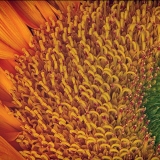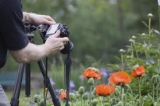- Forum
- General Discussion | Introductions | Off Topic Forum
- Photography General Discussion
- Low light performance more about the sensor or lens?
Low light performance more about the sensor or lens?
-
 Topic Author
Topic Author
- Crammer
- Photography Hooked
-
- Nikon D810 & D90
- Followers: 139
- Posts: 942
-
Points:
7837
Post #439839
-

- Screamin Scott
- Moderator
-
- Nikon D610, Nikon D7100, Nikon D300, Olympus OMD E-M5 MarkII, Olympus OM-D E-M10, Olympus Pen E-P3 + film SLR's
- Followers: 1384
- Posts: 6858
-
Points:
40052
Post #439841
-

- tganiats
- Lone Wolf
-
- Nikon D800
- Followers: 99
- Posts: 218
-
Points:
130
Post #439851
The lens is also complicated. One easy part of the lens is the maximum aperture. A faster lens (small f/stop number) will do better in low light (if that aperture is used). However, something I learned recently (and I'd love others to confirm) is that even at a fixed aperture, some lenses will transmit more light than others. Is that right?
-

- Screamin Scott
- Moderator
-
- Nikon D610, Nikon D7100, Nikon D300, Olympus OMD E-M5 MarkII, Olympus OM-D E-M10, Olympus Pen E-P3 + film SLR's
- Followers: 1384
- Posts: 6858
-
Points:
40052
Post #439854
en.wikipedia.org/wiki/F-number
-
 Topic Author
Topic Author
- Crammer
- Photography Hooked
-
- Nikon D810 & D90
- Followers: 139
- Posts: 942
-
Points:
7837
Post #439862
Screamin Scott wrote: Both will have an effect. In film days, it was about faster (and grainier results) film coupled with faster lenses. Now , with digital, it's about more sensitive sensors with faster lenses. Either a fast lens or a more sensitive sensor will get you better low light images, both are equally important...
Yeah the grain is what would kill you unless you were into hypering film, or buying it. And then not all films would cook really well for doing that. So hence fast glass, is and always will be king in the area of giving you more light to work with. But the beauty of the digital age is that you can shoot with much faster shutter speeds in lower light even with the lens stopped down to a greater extent. So the lens is not the primary performer for low light for some camera models. Though having fast glass does give you an advantage speed wise for the shutter end.
The larger the sensor does not mean that it is better at low light, it only means it has more surface are to gather what it sees, and more room for photo sites depending on size. The larger the photo site the more photos it can collect from any available light. But if you use too large of a photo site the resolution drops, but you can shoot in essentially the dark. Now they are going back to pixel packing, and losing some of it, but not as much as they have gained. It is a win for us in that we are now able to do thing we only dreamed we could do in the old days. I fell lucky to have seen it all change.
-
 Topic Author
Topic Author
- Crammer
- Photography Hooked
-
- Nikon D810 & D90
- Followers: 139
- Posts: 942
-
Points:
7837
-

- ThatNikonGuy
- Master of the Lens
-
- Nikon D810 & D300
- Followers: 299
- Posts: 1888
-
Points:
16120
Post #440065
-

- Stealthy Ninja
- Moderator
-
- Fuji X stuff and a 1DsIII for some reason
- Followers: 982
- Posts: 16300
-
Points:
6837
- Forum
- General Discussion | Introductions | Off Topic Forum
- Photography General Discussion
- Low light performance more about the sensor or lens?
Latest Reviews
The Fujifilm XT5 is a 40MP mirrorless camera capable of 6.2K video at 30p. With those specs, it’s an ideal choice for photographers needing a camera to pull double duty for imaging and video.
The Canon EOS R100 is an entry-level mirrorless camera introduced in 2023. But just because it’s an entry-level camera doesn’t mean it’s a bare-bones camera. Find out why in this review!
Nikon’s retro-looking Nikon Zfc is anything but retro. Under its classic body is a host of features and amenities that make it a worthwhile compact mirrorless camera for 2024.
The Canon EOS R50 is one of the newest R-system cameras from Canon. Is it worth your money? Find out all the details you need to know in this comprehensive review.
Forum Top Posters
-
1TCav 9 posts
-
2CharleyL 5 posts
-
3Sawyer 5 posts
-
4AstralArti... 3 posts
-
5Jason Stevens 3 posts
-
6db3348 3 posts
-
7Stanly 3 posts
-
8Randy Shaw 3 posts
-
9Razky 3 posts
-
10Moe 3 posts
Latest Articles
Urban photography is a genre showcasing features in urban settings. You can photograph people, architecture, mass transit, and many other subjects. Learn how to do so in this guide!
The Nikon D850 might be an older DSLR, but it was ahead of its time when it debuted in 2017. That means it still has plenty of firepower to compete with today’s powerful mirrorless cameras.
The best beginner camera isn’t the same for everyone. That means having choice is of the utmost importance. In this guide, explore five excellent beginner camera options for 2024 and beyond.
Child portrait photography is a unique undertaking requiring special skills and talents to get the best results. Start mastering this photography niche with these essential tips!
The Fujifilm XT5 is a 40MP mirrorless camera capable of 6.2K video at 30p. With those specs, it’s an ideal choice for photographers needing a camera to pull double duty for imaging and video.
Using leading lines in photography helps improve the composition by drawing viewers in and leading their eye from the foreground to the background. Explore some fine examples of this in this guide!
The Insta360 has one of the best lineups of action cams and 360-degree cameras. With these Insta360 accessories, you can elevate your photography and videography game!
Creating impactful photos of landscapes depends on many factors, not the least of which is your talent behind the lens. This guide explores other elements required for the best product.

















